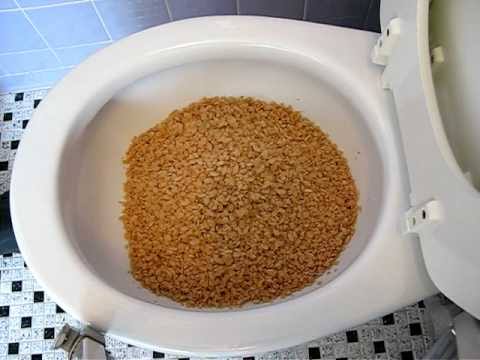Everyone maintains their own unique piece of advice in relation to Flushing Food Down the Toilet?.

Intro
Lots of people are commonly faced with the problem of what to do with food waste, particularly when it comes to leftovers or scraps. One typical concern that emerges is whether it's okay to purge food down the toilet. In this short article, we'll look into the reasons why people could consider purging food, the consequences of doing so, and different techniques for appropriate disposal.
Reasons that people may consider purging food
Lack of recognition
Some people may not understand the potential harm triggered by purging food down the bathroom. They may erroneously believe that it's a safe practice.
Comfort
Flushing food down the toilet may seem like a quick and simple service to disposing of undesirable scraps, particularly when there's no nearby trash bin offered.
Laziness
Sometimes, individuals might simply pick to flush food out of large negligence, without taking into consideration the consequences of their actions.
Effects of flushing food down the toilet
Environmental influence
Food waste that ends up in waterways can contribute to air pollution and injury water ecological communities. Additionally, the water made use of to purge food can stress water resources.
Pipes problems
Purging food can bring about stopped up pipelines and drains, causing pricey plumbing fixings and hassles.
Types of food that should not be purged
Coarse foods
Foods with coarse appearances such as celery or corn husks can get tangled in pipelines and create clogs.
Starchy foods
Starchy foods like pasta and rice can soak up water and swell, resulting in obstructions in pipes.
Oils and fats
Greasy foods like bacon or food preparation oils should never be purged down the toilet as they can strengthen and create obstructions.
Appropriate disposal methods for food waste
Using a waste disposal unit
For homes equipped with waste disposal unit, food scraps can be ground up and flushed via the plumbing system. Nonetheless, not all foods appropriate for disposal in this fashion.
Recycling
Certain food product packaging materials can be reused, minimizing waste and reducing environmental influence.
Composting
Composting is an environment-friendly way to throw away food waste. Organic materials can be composted and made use of to enhance dirt for gardening.
The significance of appropriate waste administration
Lowering ecological injury
Correct waste management methods, such as composting and recycling, help lessen contamination and maintain natural resources for future generations.
Protecting pipes systems
By staying clear of the practice of flushing food down the toilet, homeowners can stop pricey pipes repair work and keep the honesty of their pipes systems.
Verdict
In conclusion, while it might be appealing to flush food down the commode for convenience, it is essential to comprehend the prospective repercussions of this activity. By taking on correct waste administration techniques and throwing away food waste sensibly, individuals can add to much healthier pipes systems and a cleaner setting for all.
FLUSH FOOD DOWN THE TOILET?
FLUSHING FOOD CAN CAUSE BLOCKED DRAINS IN YOUR HOME
All of the plumbing fixtures in your home are connected to the same sewer pipe outside of your home. This outdoor sewer pipe is responsible for transporting all the wastewater from your home to the Council sewer mains. Even small pieces of food that go down the kitchen sink can cause problems for your sewer. It should therefore be obvious that flushing larger bits of food, such as meat, risks a clog in either the toilet itself or the sewer pipes. Flushing greasy food is even more problematic because oil coagulates when it cools, coating the interior lining of your pipes.
THE TOILET IS NOT A BIN
Food isn’t the only thing that people shouldn’t be flushing down the toilet. People use the toilet to dispose of all kinds of things such as tampons, makeup wipes, dental floss, kitty litter and even underwear. Water goes to great lengths to educate residents about the high costs and stress placed on wastewater treatment systems simply from people flushing the wrong stuff down the toilet. It costs taxpayers millions of dollars each year, and homeowners thousands in blocked drain repairs.
FLUSHING FOOD IS A WASTE OF WATER
Flushing food is a waste of our most precious resource - water. In June this year Level 1 water restrictions were introduced to protect water supply from drought conditions. Much of New South Wales continues to be affected by prolonged drought with recent figures revealing up to 97 per cent of the state remains in drought. Depending on whether you have a single or dual flush toilet, every single flush uses between five and 11 litres of water. In the current climate this is a huge amount of water to be wasting on flushing food that should be placed in the bin (or better yet, the compost).
https://www.jabplumbingsolutions.com.au/blog/can-you-flush-food-down-the-toilet

As a passionate person who reads about Think Twice Before Flushing Food Down Your Toilet, I figured sharing that piece of content was really useful. So long as you appreciated our page please make sure you remember to share it. I truly appreciate your readership.
More Details